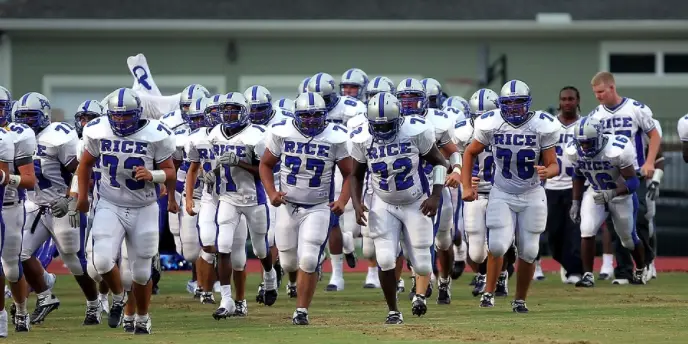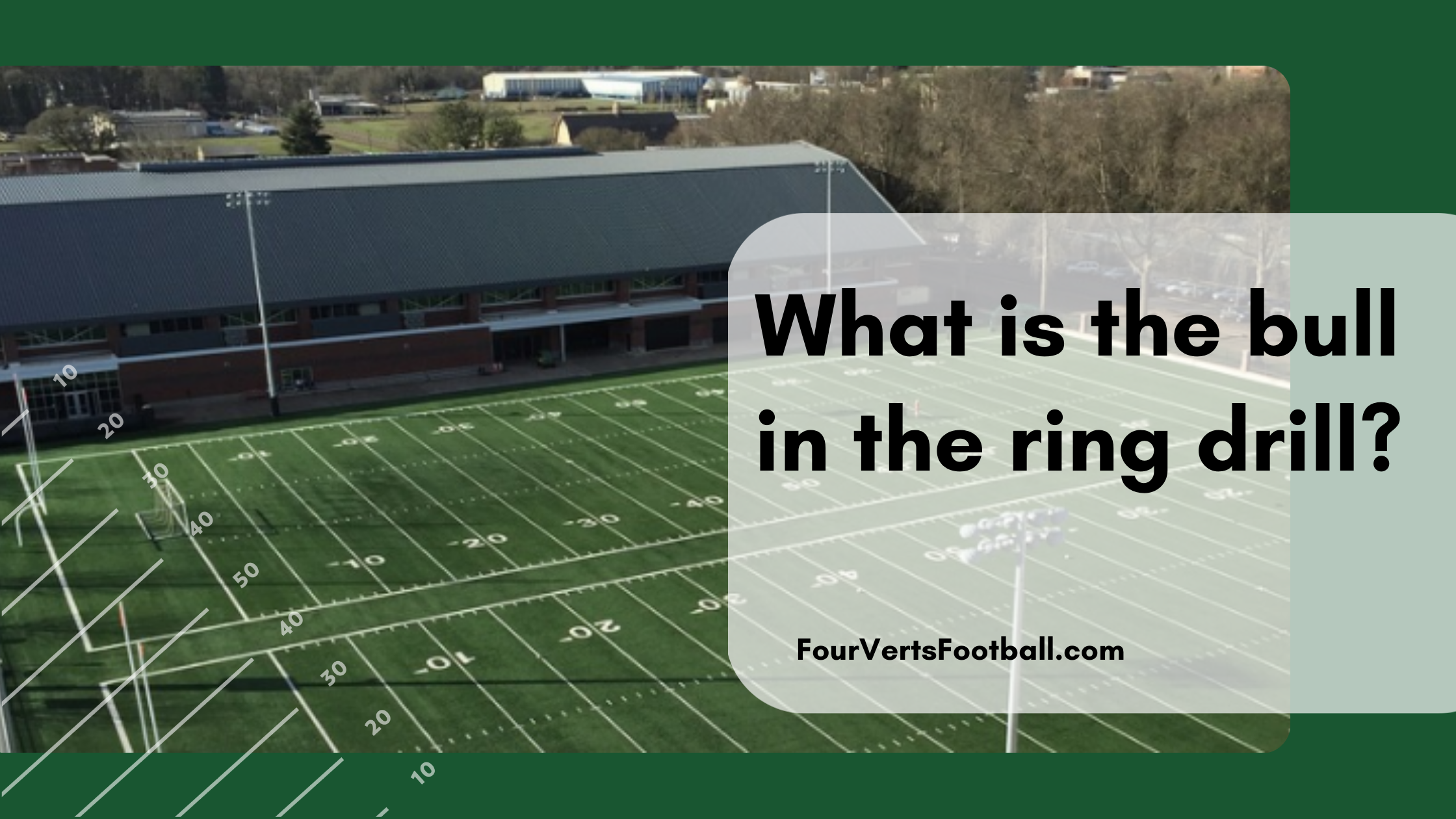The bull in the ring football drill has drawn attention since it was officially banned from the NFL along with the Oklahoma drill. Though many still do not know much about this drill at all.
What Is It?
This bull in the ring drill works by organizing the players into a circle. One player is placed into the middle of the ring and given a football. Each player in the circle is given a number they must remember. Once their number is called they enter the ring and attempt to tackle the ball carrier.
The players in the circle count to ten as the defensive player tries to tackle the ball carrier.
If the ball carrier is tackled then the player who tackled him starts with the ball for the next drill. If ten seconds pass before the ball carrier is tackled then the ball carrier will remain in the circle.
Say the ball carrier survives two rounds in the circle. Then the coach can decide to call two numbers to make the drill more difficult.
It is important that the coach remembers what numbers he has called so that each player has a chance to jump in the ring.
To learn about other drills similar to bull in the ring see our guide to the oklahoma drill in football.
Alternate Version of bull in the ring
Like many other football drills, the bull in the ring has alternative versions that offer some unique changes to the drill.
Many coaches run the bull in the ring drill without a ball carrier at all. Instead, the two players are called into the circle and the last one to remain there is the winner.
In this version of the bull in the ring drill, both players will start in a two or three-point stance. Once the whistle blows they will hit each other until one is forced out of the ring.
Purpose Of Bull In The Ring Football Drill
The purpose of this football drill is to work on tackling techniques. Attempting to take a player one on one is a difficult task.
Getting reps of one on one work can be vital to improving your tackling technique.
If you are playing on the defensive side of the ball it is just a matter of time until you have to make a tackle in a one on one situation.
Even depth players that tend to only play special teams may even benefit from this drill. Punt team and kickoff team both need to be effective tacklers in order to do their job properly.
Using this drill the players are able to get more comfortable with tackling opponents.
Open field tackles can be especially hard which is why football players need to be sure to get this technique down. Additionally, offensive players are going to be quite shifty when they have the ball in their hands.
To practice tackling players with this skillset offensive players are often included in the bull in the ring football drill.
The also plays a role in helping the offensive player with his ability to break tackles. If you play a skill position you are going to find yourself attempting to break a tackle many times throughout the season.
By being the bull in the ring in this drill you will have several opportunities to break the tackle of an opponent.
This may allow offensive players to break more tackles in the coming games resulting in increased YAC and yards after contact for running backs.
This drill may also improve the ball carriers’ ability to break tackles.

Why Was Bull In The Ring Banned?
The bull in the ring drill has not been banned everywhere but it has been in the NFL and many youth and high school football leagues have decided to ban this drill as well.
The reasoning behind the ban is to lower the number of concussions in practice. As we know head trauma has become a common theme in football. The sport itself has been looking for ways to reduce these risks and this drill was one of them.
The physical nature of this drill can often lead to head to head collisions. Whether it’s a concussion or smaller head trauma the damage can add up over time.
Players in football practice should be encouraged to learn how to tackle properly without using their heads. Placing two players into a ring of their teammates is going to result in a lot of energy.
Oftentimes these players are not going to worried about tackling form and instead will do anything to be the winner of the drill.
This is what can often lead to head on head collisions in this drill.
In the end, the cost of this drill outweighed the benefits as players can still practice their one-on-one tackling in a much safer environment.
That’s all on the bull in the ring check out the three cone drill or learn about gassers to get a better understanding of football practice drills.

